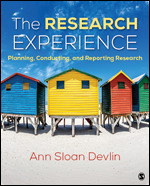Online Survey Software Tools

Online Survey Software ToolsOnline survey software tools such as Survey Monkey® and Qualtrics® enable you to present your survey online for your respondents. This approach has a number of advantages to both researchers and participants. First, once you create your survey online, it can be sent to anyone, anywhere, with a survey link the program generates for you. The online approach offers a great deal of flexibility (for the researcher and the respondents). In Chapter 9, we will talk about using AmazonMTurk, which provides an online route to obtain participants through crowdsourcing. Crowdsourcing is obtaining something (e.g., ideas) from people online, and one form of crowdsourcing is seeking services. In this case respondents (“workers”) are paid (by the researcher, the “requester”) to take the survey. The survey you create through Survey Monkey® or Qualtrics® is typically the link that is sent to the “worker” through the AmazonMTurk site.Another advantage to online surveys is accuracy. Because respondents are typically responding to set option choices (see Figure 5.11), the approach reduces the likelihood of data entry errors (because some online platforms allow you to directly download the data into statistical software). Third, the approach promotes sustainability because you cut down on the use of paper. Fourth, because some of these programs (e.g., Qualtrics®) enable you to directly download the responses into SPSS, this saves time for the researcher (and again cuts down on data entry errors).What are the disadvantages? First, these programs cost money. The account subscription is usually paid by the institution, but someone has to pay. Second, there is a learning curve to using these programs. Many instructors and students feel that these programs add another significant component to the material that must be covered in a research methods course. Instructors don’t always have the time (or the expertise) to cover these survey tools; students may be faced with learning the intracies of the programs by themselves. Third, when you rely on this approach, some respondents may not have access to computers and the Internet and cannot access your survey. Fourth, the flexibility these programs offer can be a threat to internal validity. If respondents can take the survey (by accessing the link) anytime and anywhere, the circumstances under which this occurs will not be uniform across participants. This variability in procedure is a threat to internal validity. The researcher has no idea whether the respondent was watching television while completing the survey, for example.[su_box title="Typical Online Survey Option Choices" style="default" box_color="#333333" title_color="#FFFFFF" radius="3" class=""]
 [/su_box]To deal with this problem, some departments require students in the participant pool to come to a physical location (where the researcher is present) to access the survey. Usually the researcher has the email address of each respondent, with the link included in the body of the email (in an email draft), and sends that email as soon as the participant appears at the research site. This approach also cuts down on the likelihood that respondents will start the survey and stop after a few items; in this case the demand characteristic created by the presence of the researcher is not such a bad thing!
[/su_box]To deal with this problem, some departments require students in the participant pool to come to a physical location (where the researcher is present) to access the survey. Usually the researcher has the email address of each respondent, with the link included in the body of the email (in an email draft), and sends that email as soon as the participant appears at the research site. This approach also cuts down on the likelihood that respondents will start the survey and stop after a few items; in this case the demand characteristic created by the presence of the researcher is not such a bad thing!
[su_box title="Drawn From" style="bubbles" box_color="#333333" title_color="#FFFFFF" radius="3" class=""]
 This material is drawn from the SAGE Publishing text The Research Experience: Planning, Conducting, and Reporting Research by Ann Sloan Devlin at Connecticut College.The Research Experience: Planning, Conducting, and Reporting Research presents a process-oriented approach to research for students in the behavioral sciences. In-depth, practical advice for conducting each step of the research process includes coverage of the most common research methods and current technologies—including Qualtrics, Google Scholar, and Amazon Mechanical Turk—as well as techniques for finding participants and collecting data in a variety of settings. With robust pedagogy and six helpful appendices, this text will further readers’ ability to produce well-executed projects and critically evaluate information in both their personal and professional lives.[/su_box]
This material is drawn from the SAGE Publishing text The Research Experience: Planning, Conducting, and Reporting Research by Ann Sloan Devlin at Connecticut College.The Research Experience: Planning, Conducting, and Reporting Research presents a process-oriented approach to research for students in the behavioral sciences. In-depth, practical advice for conducting each step of the research process includes coverage of the most common research methods and current technologies—including Qualtrics, Google Scholar, and Amazon Mechanical Turk—as well as techniques for finding participants and collecting data in a variety of settings. With robust pedagogy and six helpful appendices, this text will further readers’ ability to produce well-executed projects and critically evaluate information in both their personal and professional lives.[/su_box]
